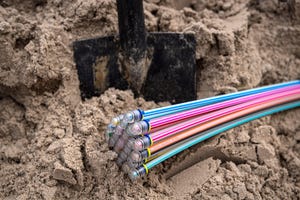
Google has worked out the kinks in its Project Loon, and is gearing up to launch thousands of balloons to bring Internet to unconnected regions across the globe.
In a promo video released last week, Google (Nasdaq: GOOG) Loon Project Lead Mike Cassidy gave a status report on the company's long-held plans to use high-altitude balloons equipped with wireless radios to bring wireless connectivity around the world. It's been testing the pilot program with operators such as Vodafone New Zealand , Telefónica and Telstra Corp. Ltd. (ASX: TLS; NZK: TLS) since 2013. (See Broadband: It's All Hot Air for Google.)
Cassidy says that Google has improved the balloons to the point that they can last over 100 days in the air, and has reduced production time from days to hours. It can now launch dozens of balloons per day using its automated crane system. And, while Google initially envisioned delivering 3G speeds via Loon, it now says it can deliver ten times higher data rates using LTE. (See Bell Labs Chief Slams 'Toy' Networks.)
"If you look at the system today, it's amazing how much more advanced it is from being ten times higher data rate to the balloons lasting ten times as long, to the steer-ability of the balloon," Cassidy said in the video (below). "We've flown the tropics; we've flown the Artic regions -- the technology is working. We're getting close to the point where we can bring the Internet to people around the world."
For more on related topics, check out our LTE content channel here on Light Reading.
Loon is delivering LTE via partnerships with telcos that it hopes to get in every local region across the globe. It hasn't said whether it will also offer the service through these partners or direct to consumers, but the former sounds more likely. Tony Baird, CTO of early pilot partner Vodafone New Zealand, said it plans to use the balloons to bring the Internet to communities it doesn't currently reach. (See The New Internet Space Race: Google's Final Frontier?)
"Ultimately the goal of any Internet service provider is to have 100% geographic coverage and all the capacity and speed that people expect," Baird said. "Project Loon will help deliver that."
— Sarah Thomas, 

 , Editorial Operations Director, Light Reading
, Editorial Operations Director, Light Reading
Read more about:
AsiaAbout the Author(s)
You May Also Like




_International_Software_Products.jpeg?width=300&auto=webp&quality=80&disable=upscale)







